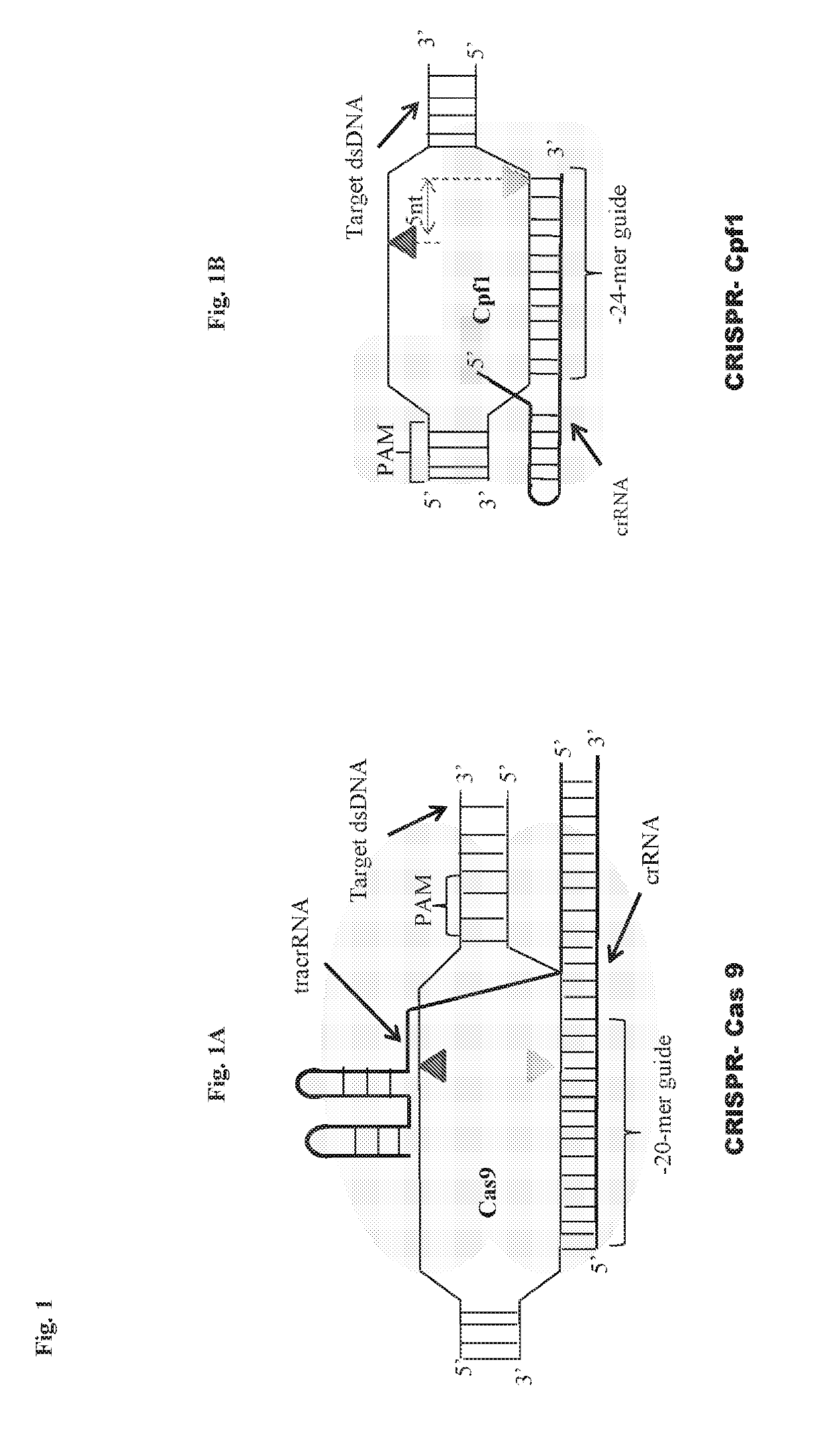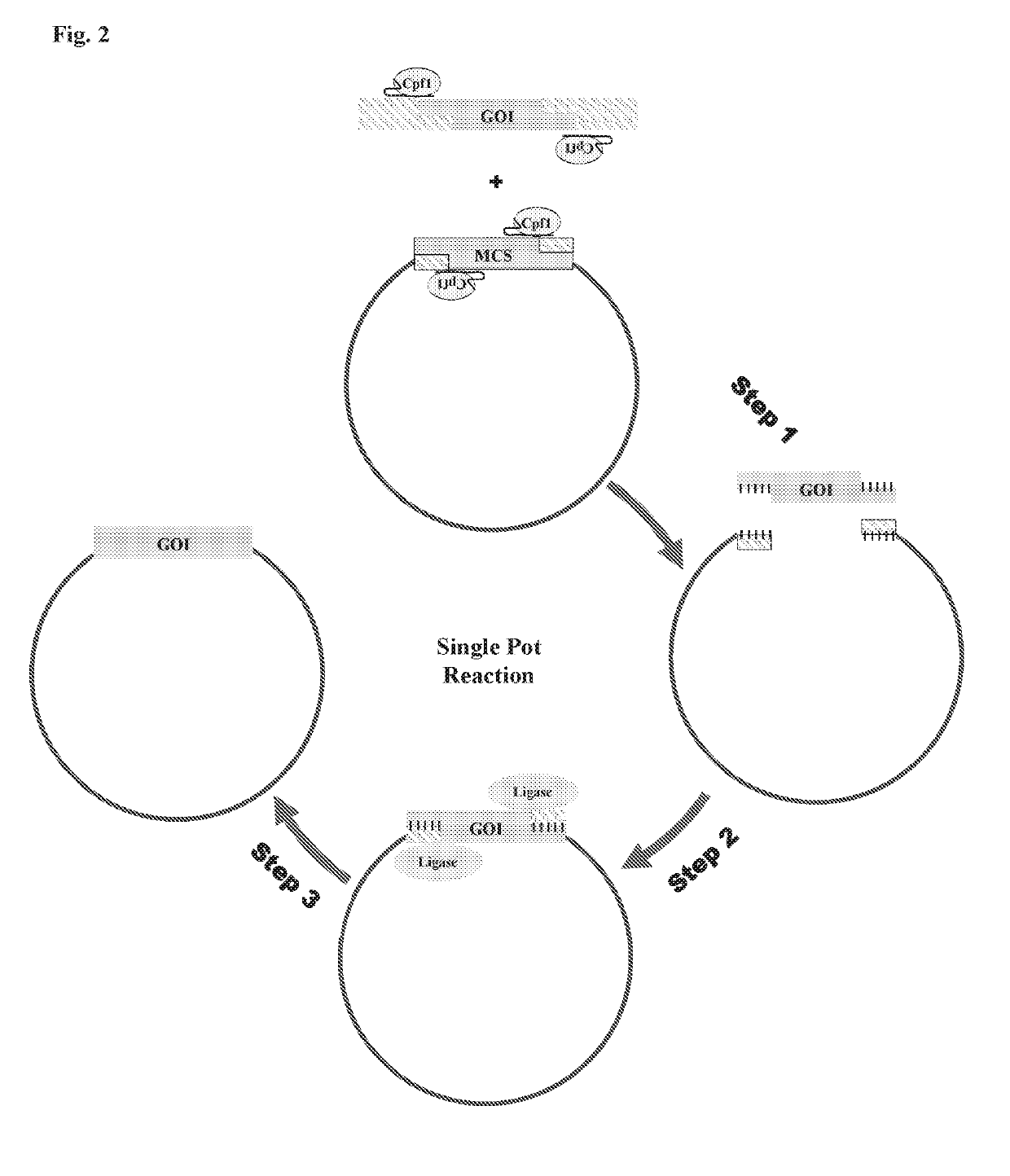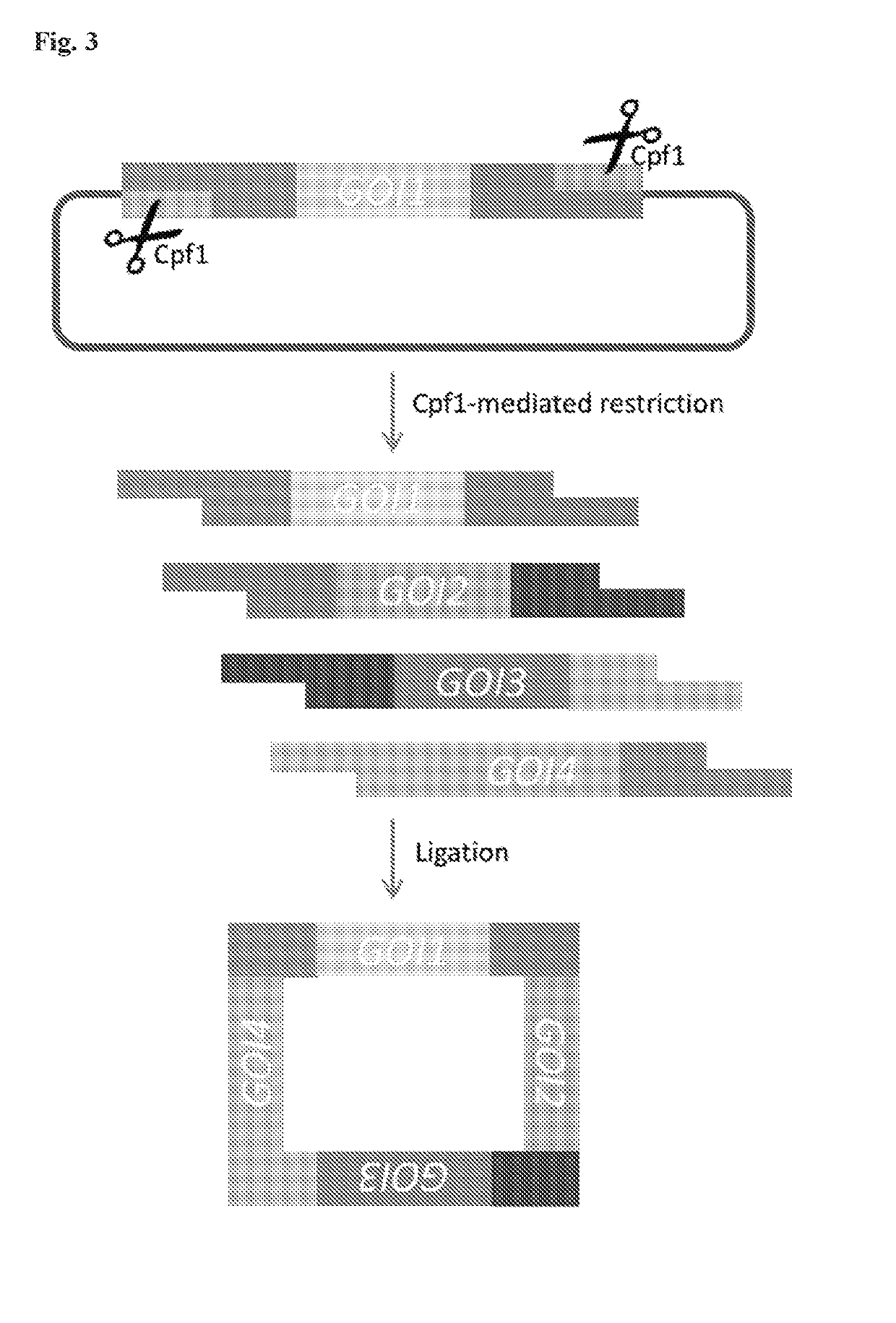Scarless DNA assembly and genome editing using crispr/cpf1 and DNA ligase
- Summary
- Abstract
- Description
- Claims
- Application Information
AI Technical Summary
Benefits of technology
Problems solved by technology
Method used
Image
Examples
example 1
n of Purified Cpf1 Protein
[0192]Cpf1 protein was purified from bacterial cultures for use in future in vitro CLIC reactions. The coding sequence for the FnCpf1 was cloned into a standard bacterial expression pD454-HMBp based backbone vector (pUC ori. AmpR, T7 promoter (IPTG inducible, His-tag. MBP fusion, TEV protease cleavage site) and was transformed into a E. coli BL21(DE3) protein production host. The transformed cultures were grown in standard bacterial media and were induced with IPTG. Cultures were then lysed, and the resulting protein extractions were nickel purified, followed by the removal of tags with TEV protease.
[0193]Purified Cpf1 protein was visualized in a SDS-PAGE gel to confirm purity (see lane 2 in FIG. 8). Cpf1 protein concentration was determined via standard Bradford Assay quantification methods (see FIG. 9).
example 2
[0194]Purified Cpf1 enzyme from Example 1 was incubated with a 1956 bp PCR fragment and a crRNA to test for Cpf1-mediated digestion. The 1956 bp PCR sequence for the reaction was derived from a PCR an amplification of pWD031 plasmid, resulting in a PCR product as disclosed in SEQ ID NO. 79. The crRNA was derived from an in vitro transcription of a linear DNA template using a T7 HiScribe® RNA synthesis kit, resulting in a crRNA with the sequence disclosed in SEQ ID NO. 85.
[0195]The crRNA sequence was designed such that successful Cpf1 cleavage of the 1956 bp PCR fragment would result in a 1500 bp and a 500 bp fragment (SEQ ID NO. 84, and SEQ ID NO. 83, respectively). A first reaction was allowed to digest the PCR fragment for 20 minutes at 37 degrees Celsius to confirm Cpf1 activity. A second reaction was allowed to digest the PCR fragment for 20 minutes at 37 Celsius, followed by a heat inactivation of the Cpf1 enzyme, and a 2-hour incubation with T7 DNA l...
example 3
itro Single Pot Cloning with Cpf1-Fragment Ligation
[0197]In order to test Cpf1's ability to conduct single-pot in vitro DNA assembly, a two fragment digestion / ligation reaction was conducted. Two PCR products with sequences disclosed in SEQ ID No. 86 and 87 were combined in a Cpf1 reaction with a pre-synthesized crRNAs 1 and 3 with the sequence disclosed in SEQ ID No. 85 and 88.
[0198]The crRNA sequences were designed so as to direct the Cpf1 nuclease to the outer portions of the PCR products, such that the Cpf1 binding sites would be removed once the reaction was complete. The Cpf1 complex was thus designed to be in an inverse orientation to ensure that digested PCR products would cease to be Cpf1 substrates, and would thus be available for subsequent ligation steps of the experiment. The reaction also included a T7 ligase purchased from commercial vendors. A control reaction for this experiment omitted the ligase, but was otherwise identical. Both reactions were conducted using a T...
PUM
 Login to View More
Login to View More Abstract
Description
Claims
Application Information
 Login to View More
Login to View More - R&D Engineer
- R&D Manager
- IP Professional
- Industry Leading Data Capabilities
- Powerful AI technology
- Patent DNA Extraction
Browse by: Latest US Patents, China's latest patents, Technical Efficacy Thesaurus, Application Domain, Technology Topic, Popular Technical Reports.
© 2024 PatSnap. All rights reserved.Legal|Privacy policy|Modern Slavery Act Transparency Statement|Sitemap|About US| Contact US: help@patsnap.com










